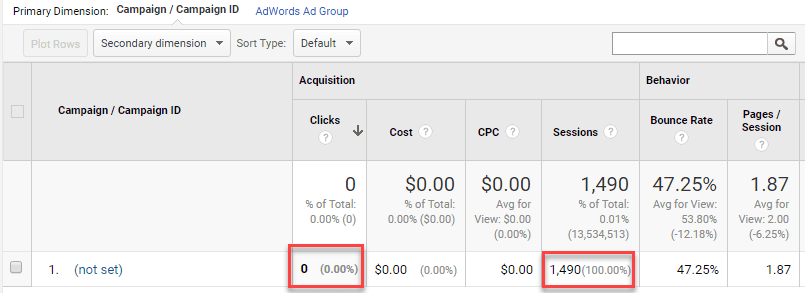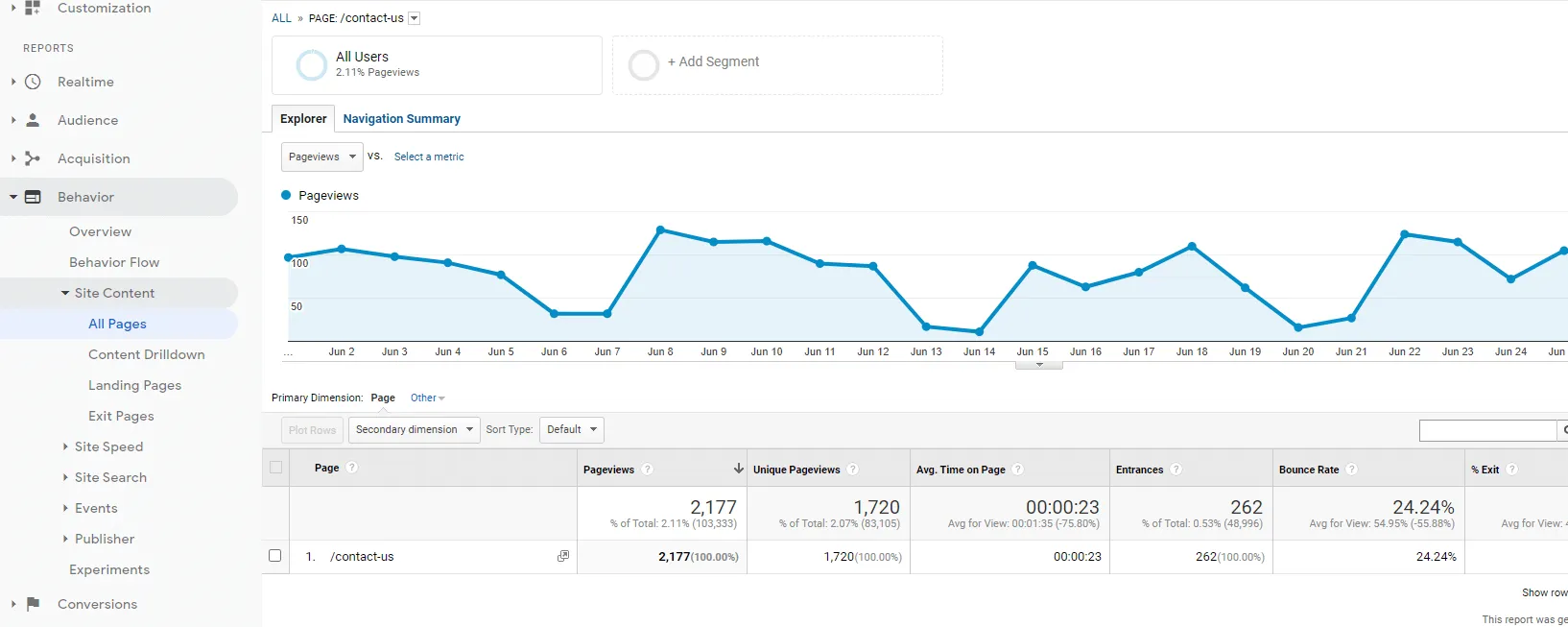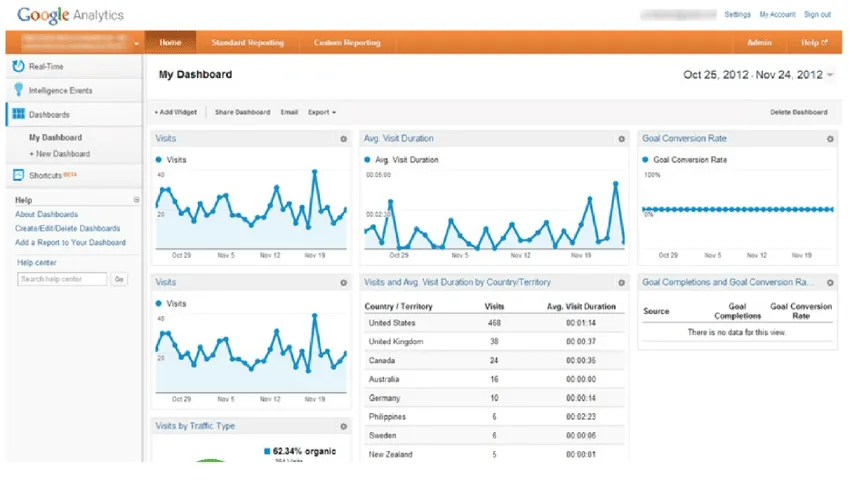The Google Analytics tracking tool is a great resource for anyone running a website. Information on your site's traffic sources, user behavior, and conversion rates (i.e., how many people subscribed to your newsletter or filled out a form to request a consultation) can be gleaned from this tool.
By gathering adequate data, you can confidently answer crucial marketing questions like "Who is my target audience?", "What do they need?" and "Does my website do a good job of fulfilling those needs?"
Most business owners, however, have encountered the frustrating situation of starting up an analytics tool only to find that either no data has been collected or the data shown to them makes no sense.
Knowing the potential flaws in your metrics will aid you in analyzing your site's statistics, allowing you to make adjustments that will attract more visitors. In order to make the most of this potent website tool, we will analyze some typical problems with analytics monitoring and how to resolve them.
Table of Contents
1. Google Analytics real-time reports isn’ t working
Sending events to Google Analytics that don't involve user interaction is one potential cause of the real-time report feature failing to function. In Google Tag Manager, for instance, you have the option of configuring events as "non-interactional." Although this setting will have an effect on the Google Analytics Real-Time Events reports, it is necessary to utilize it for certain events.

There is possibly an issue with the Google Analytics tracking code if you are not receiving any analytics data in your Real-Time reports. Initial steps include verifying the presence of a functioning tracking code on your website.
Click "Admin," then "Tracking Info," and finally "Tracking Code" to view the tracking number. Your unique tracking ID is displayed at the very top of this page.
You can now double-check on your site to make sure the right tracking ID is being used for all incoming data. Chrome's Google Tag Assistant add-on is an excellent tool for double-checking. With this, you can easily monitor where your information is going.
2. Why am I seeing no data in Google Analytics?
This is a common problem when you open Google Analytics: the graph shows a flat line. This means that no website analytics are being gathered.
What are the most common reasons why you don’t see any data in Google Analytics?
2.1. You analytics code is not installed at all or has been removed. This is easy for you or your developer to fix: just get the tracking code from Google Analytics (Admin > Tracking Info > Tracking Code) and put it in the header of your site, or use Google Tag Manager to put in the UA code. If you don't know how to code, you can also install using a plug-in, but we wouldn't recommend it because it can add extra weight and pose a security risk if the plug-in isn't well maintained.
2.2. The analytics code is installed on the site, but not on the page you're looking at. This is a common problem on landing pages and other places where a site-wide header might not work. In this case, you'll need to put the tag or GTM code into the header of this page.
2.3. Sometimes the analytics code is not set up right. If you are tech-savvy, you can open Google Chrome's Developer Tools console to see if there are any errors in your analytics reports. However, in most cases, we recommend removing the current configuration and installing it as described in step 1.
2.4. Something is stopping your analytics code. This problem has come up with security plugins that stop scripts from running (the Google Analytics tracking code is a JavaScript script). In this case, add the script/URL to your whitelist or ask your developer for help.

3. You have duplicated tracking codes
When you install duplicate tracking codes, it can hurt the quality of your analytics data in a big way. It will mess up your statistics and analytics, like how long people stay on your page and how often they leave.
How do I find duplicate Google Analytics codes in WordPress?
To identify if there are duplicate tracking codes, run Google Tag Assistant as outlined in Issue #1. It will show you which codes are the same. If you need to find duplicate codes on a WordPress site, you can usually find them in one of the following places:
- Added through a site-wide header (header.php).
- Hard-coded into the page instead of being put in a container like Google Tag Manager.
- Added through a plug-in (either site-wide or on individual pages).
It is also possible that you have more than one code installed in the same place. For example, you could have two tracking codes installed in the site-wide header.
Which code should you consider? It depends on your policies, but we like Google Tag Manager because it is easier to test and Q/A, especially if you need to manage tags and pixels for other platforms as well.
Once you have removed the duplicate code, run Google Tag Assistant again to make sure you are no longer getting a warning about duplicate tags.
4. You don’t view the analytics tracking code in the source code
If you get the "missing tracking code" message, check to see if the tracking code is set up correctly on those pages. If you confirm that the tracking code is missing, you can set up the web tracking code on those pages. The notification you got only told you about a small number of pages. It shouldn't be taken as a full list, so be sure to check out other pages on your site.
Follow these steps to find the code snippet and tracking ID:
- Log in to your Google Analytics account and click "Admin."
- Then, click on "Tracking information" and choose "Tracking code." Here is where you can find the tracking ID and tracking code.

Add the tracking code from Google Analytics to your HTML.
- Once you find the snippet of JavaScript tracking code for your property, copy the whole snip without modifying it. Paste the code right after the opening <head> HTML tag.
5. You Have a Very Low Bounce Rate
The average bounce rate is 40-60%. If you see a very low bounce rate (less than 1%), it is very likely caused by duplicate tracking codes, so follow the instructions in issue #3.
Another common cause is an event that occurs shortly after the page loads. For example, if you have an event that fires 5 seconds after the page loads and the chat window appears, you will have a low bounce rate. This is because an event fire counts as an interaction, and sessions with no interactions are defined as bounces. If this chat pop-up event aligns with your business objectives, fantastic! There are no changes required.

The straightforward solution is to disable one of the firing page views. This should resolve the issue and restore the page's Google Analytics bounce rate to normal. Otherwise, you won't be able to make informed decisions based on bounce rate.
6. Your Goal Tracking Isn’t Working
If the goal page is not tagged with a tracking code, Analytics does not track it. You should ensure that the correct tracking code has been installed on your pages, as the tracking code is unique to each account property.
Google Analytics allows you to track up to 20 goals in addition to events. These are typically aligned with your site's business objectives, such as purchases or phone calls. But it is very easy to make a mistake and end up with either deflated or inflated analytics data.
If your goals are not configured properly, you will not see any conversions in your reports, which will produce an error in Google Analytics and prevent the tool from functioning properly. There could be a variety of explanations for why this is taking place.
- Incorrect goal URL
- Missing analytics tracking code on the goal page
- Incorrect match type
- Exact match errors
- Filters are rewriting the URLs
- Your goal page is a download
However, Google Analytics Goals can't monitor all data. No piece of software, for instance, can estimate an individual's worth to a company. As a result, Google Analytics goals are ineffective for measuring customer lifetime value.
7. Your Goal Completions Seem Inflated
When your marketing team reports 5,000 newsletter sign-ups but you only have 10 new users in your Mail Chimp account, this clearly indicates a configuration problem.
If the numbers don't appear right, you may create an exclusion list based on the Goal Completion Location report in Google Analytics to ensure that goals are only firing when they should be.

A tool like Google Tag Manager comes in handy here because it can help you identify issues before these goals are published and you begin collecting live data.
Find problems in your analytics in minutes
These are the most common signs that your analytics are broken. Knowing if your events and tags are working properly is key for your data collection and customer data analytics teams.
If you suspect that Google Analytics is not configured or functioning properly, Trackingplan solves this by adding observability to your interfaces. Just by installing a snippet on your site or apps, Trackingplan will show you the complete schema of your analytics, events, properties, UTMs, and pages.
The Trackingplan solution is unique because it understands in real time the meaning of every tag, event, and property delivered to track your user's behaviour. Trackingplan mission is to make sure your user data collection works as you planned, so you will get full control of the whole lifecycle of your analytics. Try it free, start monitoring your data, and be notified when errors happen or feel free to book a demo.













.webp)


